Articles
Getting Talent Back to Work Toolkit
SHRM: Toolkit with resources to advance hiring of workers with a criminal background
Managing Organizational Communication
SHRM: Formal and informal communication from employees to upper management.
The case for hiring ex-offenders
America Working Forward: Q&A with David Rattray, executive VP of Center for Education Excellence and Talent Development at the Los Angeles Area Chamber of Commerce.
Consideration of Arrest and Conviction Records in Employment Decisions Under Title VII of the Civil Rights Act of 1964
U.S. Equal Employment Opportunity Commission: Issued as part of the Commission’s efforts to eliminate unlawful discrimination in employment screening, for hiring or retention, by entities covered by Title VII, including private employers as well as federal, state, and local governments.
What You Should Know About the EEOC and Arrest and Conviction Records
U.S. Equal Employment Opportunity Commission: A Q&A resource to understand the application of Title VII to use of arrest and conviction records in employment decisions.
EEOC Tips for Small Businesses
U.S. Equal Employment Opportunity Commission: Fact sheet when making hiring or other employment decisions.
Federal Discrimination Laws
SHRM: PowerPoint presentation to understand three key areas within discrimination, harassment and retaliation laws.
Managing Equal Employment Opportunity
SHRM: Toolkit discussing pertinent federal laws, protected classes of employees, types of employment discrimination, risk management, enforcement of equal employment opportunity laws and policies, and possible legal remedies.
Background Checks: What Employers Need to Know
U.S. Equal Employment Opportunity Commission: Joint publication with Federal Trade Commission, provides information on how background checks are used in employment and when such use may implicate laws enforced by the EEOC or FTC.
How to Conduct Compliant Criminal Background Investigations
SHRM: Understanding criminal background check laws and how to implement investigations.
New Employee Onboarding Guide
SHRM: Onboarding guide outlines best practices for all employees.
Managing the Employee Onboarding and Assimilation Process
SHRM: Toolkit for onboarding and assimilating all employees.
New-Hire Orientation Process
SHRM: Policy and process for new-hire orientation for all employees.
Reintegrating the Formerly Incarcerated into the Workforce
Emily Engel: Methods of five organizations in the Midwest to address persistent unemployment for the formerly incarcerated.
Mentoring Formerly Incarcerated Adults
Annie E. Casey Foundation: Insights from the Ready4Work Reentry Initiative.
Leading with Conviction
Center for Institutional and Social Change at Columbia Law School: The Transformative Role of Formerly Incarcerated Leaders in Reducing Mass Incarceration
Creating a Mentoring Program
SHRM: Creating a program within your organization
Corporate Learning Programs
SHRM: How companies big and small are making highly tailored, responsive training a reality.
Developing Employees
SHRM: Toolkit of strategic and practical considerations for employers creating or maintaining employee development programs.
Why Talent Mobility Is Important for The Workforce
Human Resource Systems Group: Engaging and retaining top talent is more important than ever before.
Talent Mobility: The Key To Unlocking Your Organization’s Potential
Forbes: Organizations should leverage and mobilize existing talent to remain competitive.
Help Employees, Managers Recognize the Why of Lateral Moves
SHRM via Association for Talent Development: The often ignored or overlooked lateral move surfaced as a strategic development option.
Employees Stay for Career Mobility, Pay Raises, Culture
SHRM: Employers have a better chance of retaining talent when they set a clear career path for employees, pay them competitively and invest in the workplace culture.
Why Companies Should Stay Connected with Ex-Employees
SHRM: HR leaders are finding many reasons to welcome ex-employees back into the fold.
Videos
Selling It In
Dave’s Killer Bread Foundation: Making the internal case to hire individuals with a criminal background.
Risk Mitigation
Dave’s Killer Bread Foundation: Evaluating risk when hiring individuals with a criminal background.
Company Culture
Dave’s Killer Bread Foundation: Building a culture to welcome and include individuals with a criminal background.
EEOC Guidance & Background Screening
Dave’s Killer Bread Foundation: Understanding guidance from employers engaged in hiring.
Staffing & Recruiting
Dave’s Killer Bread Foundation: Sourcing talent from job centers and staffing agencies.
Interview & Assessment
Dave’s Killer Bread Foundation: First-hand experience and knowledge interviewing candidates with a criminal background.
Orientation & Onboarding
Dave’s Killer Bread Foundation: Video highlighting best practices from employers to onboard individuals with a criminal background.
A Fair Chance: How Formerly Incarcerated Talent is Entering (And Succeeding) In the Workforce
Podcast: Michelle Cirocco, Chief Social Responsibility Officer at Televerde, discusses her path from working at the call center during her incarceration to being a member of the organization’s C-Suite.
Other
Federal Bonding Program
Bonds 4 Jobs: Accessing the Federal Bonding Program.
Understanding and Developing Organizational Culture
SHRM: Evaluating and defining the factors that build an organization’s culture.
Work Opportunity Tax Credit
U.S. Department of Labor: Federal tax credit available to employers for hiring individuals from certain targeted groups.
Workforce Development Programs
CareerOneStop by Department of Labor: State-specific resources to build a strong workforce.
Re-entry Programs
Help For Felons: A list of re-entry programs by state
EEOC: Pre-Employment Inquiries and Arrest & Conviction
U.S. Equal Employment Opportunity Commission: Guidance on prohibited practices
New Hire Orientation
SHRM: PowerPoint presentation that can be personalized for your organization.
